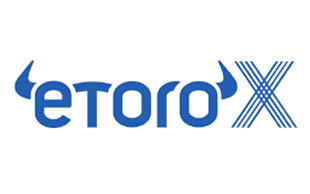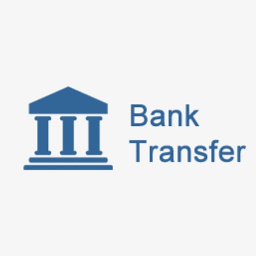Cryptocurrency wallets that accept Bank Transfer have seen a huge increase in usage over the last 2 years. Although still very new and very volatile crypto assets have become the next big thing for a new generation of modern investors, and these new investors want to buy, sell and move crypto assets using Bank Transfer. Buying stocks and shares now seems old fashioned to many new modern crypto investors who are now able to use digital wallets that accept multiple quick payment methods including Bank Transfer. When choosing a Bank Transfer Crypto wallet, consider its security, features, fees, customer support and financial regulation. Many traditional banking apps offer a range of security features, but Bank Transfer Crypto wallets differ in some aspects. Before depositing money into any Bank Transfer wallet, make sure to check Bank Transfer transaction fees which vary between wallets.

🤴 Used By: 23,200,000
⚡ Crypto Available: BTC, ETH, BCH, XRP, DASH, LTC, ETC, ADA, MIOTA, XLM and 27 more cryptocurrency.
📈 Traded Volume: 41,693,321
💵 Deposit Methods: Credit cards, VISA, MasterCard, Diners Club, Maestro, Debit Cards, Bank Transfer, PayPal, Neteller, Skrill, WebMoney, China UnionPay, Giropay, Electronic wallets (eWallets), Ethereum, Bitcoin, Bitcoin Cash, Dash, EOS, Ripple XRP, Litecoin, Zcash, Payoneer,
💰 Trading Fees: Fees vary. Overnight and weekend fees apply
💰 Withdrawal Fees: US$5 (minimum withdrawal of US$50)
💰 Deposit Fees: Fees vary (conversion fees for non-USD deposits)
Trading cryptocurrencies can be high risk. Losses may exceed deposits when trading CFDs.

🤴 Used By: 13,000,000
⚡ Crypto Available: BTC, ETH, BCH, XRP, DASH, LTC, ETC, ADA, MIOTA, XLM and 27 more cryptocurrency.
📈 Traded Volume: 42,043,394
💵 Deposit Methods: Credit cards, VISA, MasterCard, Diners Club, Maestro, Debit Cards, Bank Transfer, PayPal, Neteller, Skrill, WebMoney, China UnionPay, Giropay, Electronic wallets (eWallets), Ethereum, Bitcoin, Bitcoin Cash, Dash, EOS, Ripple XRP, Litecoin, Zcash, Payoneer,
💰 Trading Fees: Fees vary
💰 Withdrawal Fees: Fees vary
💰 Deposit Fees: Fees vary
Trading cryptocurrencies can be high risk. Losses may exceed deposits when trading CFDs.

🤴 Used By: 4,000,000
⚡ Crypto Available: BTC, ETH, ETC, XTZ, CLV, EOS, OMG, BNB, LTC, UNI and 820 more cryptocurrency.
📈 Traded Volume: 5,945,756,067
💵 Deposit Methods: Cryptocurrency
💰 Trading Fees: Maker: 0.20%
💰 Withdrawal Fees: Fees vary
💰 Deposit Fees: None
Trading cryptocurrencies can be high risk. Losses may exceed deposits when trading CFDs.

🤴 Used By: 1,000,000
⚡ Crypto Available: BTC and 1 more cryptocurrency.
📈 Traded Volume: 612,000,000
💵 Deposit Methods: Bank transfer (ACH)
💰 Trading Fees: None
💰 Withdrawal Fees: Fees vary
💰 Deposit Fees: Fees vary
Trading cryptocurrencies can be high risk. Losses may exceed deposits when trading CFDs.

🤴 Used By: 8,000,000
⚡ Crypto Available: BTC, ETH, XRP, BCH, EOS, LTC, ADA, XLM, TRX, NEO and 434 more cryptocurrency.
📈 Traded Volume: 110,957,137
💵 Deposit Methods: Cryptocurrency
💰 Trading Fees: 0.10%
💰 Withdrawal Fees: Fees vary
💰 Deposit Fees: None
Trading cryptocurrencies can be high risk. Losses may exceed deposits when trading CFDs.

🤴 Used By: 10,000,000
⚡ Crypto Available: BTC, BCH, ETH, XRP, LTC, BTG, DASH, ETC, EOS, QTUM and 320 more cryptocurrency.
📈 Traded Volume: 924,266
💵 Deposit Methods: Cryptocurrency
💰 Trading Fees: Maker: 0.2%
💰 Withdrawal Fees: None
💰 Deposit Fees: None
Trading cryptocurrencies can be high risk. Losses may exceed deposits when trading CFDs.

🤴 Used By: 73,000,000
⚡ Crypto Available: ATOM, BAT, BTC, BCH, XRP, DAI, DASH, EOS, ETH, ETC and 73 more cryptocurrency.
📈 Traded Volume: 7,622,846,254
💵 Deposit Methods: Bank transfer (ACH)
💰 Trading Fees: Fees vary
💰 Withdrawal Fees: Instant Card Withdrawal: Up to 2% of the transaction plus a minimum of 0.45
💰 Deposit Fees: Credit/debit card: 3.99%
Trading cryptocurrencies can be high risk. Losses may exceed deposits when trading CFDs.

🤴 Used By: 450,000
⚡ Crypto Available: BTC, ETH, XRP, EOS, LTC, XLM, USDT, OMG, ZRX, MKR and 42 more cryptocurrency.
📈 Traded Volume: 64,141,140
💵 Deposit Methods: Bank transfer
💰 Trading Fees: Maker: 0.05-0.15%
💰 Withdrawal Fees: Fees vary
💰 Deposit Fees: No Fees
Trading cryptocurrencies can be high risk. Losses may exceed deposits when trading CFDs.

🤴 Used By: 10,000,000
⚡ Crypto Available: BTC, ETH, USDT, XRP, ATOM, XTZ, XLM, LINK, CRO, BCH and 153 more cryptocurrency.
📈 Traded Volume: 2,630,000,000
💵 Deposit Methods: Credit card
💰 Trading Fees: Maker: 0.04-0.20%
💰 Withdrawal Fees: Cryptocurrency: Fees vary
💰 Deposit Fees: None
Trading cryptocurrencies can be high risk. Losses may exceed deposits when trading CFDs.

🤴 Used By: 2,300,000
⚡ Crypto Available: BTC, ETH, ETC, BCH, LTC, ADA, QTUM, XRP, XTZ, EOS and 10 more cryptocurrency.
📈 Traded Volume: 86,072,667,390
💵 Deposit Methods: Bank transfer (ACH)
💰 Trading Fees: 2.9-3.9% (depending on loyalty level)
💰 Withdrawal Fees: Fees vary
💰 Deposit Fees: Credit card: 5%
Trading cryptocurrencies can be high risk. Losses may exceed deposits when trading CFDs.


A Bank Transfer cryptocurrency wallet is a digital address that can be used to make transactions using the Bank Transfer payment method. Like a bank account, Bank Transfer Crypto users have private keys that are used to initiate transactions. This unique crypto wallet code is also used to sign transactions. If you ever need to buy or sell or transfer cryptocurrency, it can be done with Bank Transfer, its very easy using a crypto wallet that supports Bank Transfer.
A Bank Transfer cryptocurrency wallet is designed to store your digital assets securely. It allows you to carry out crypto related transactions using Bank Transfer, while keeping your account private. Unlike a bank, Bank Transfer crypto wallets offer open software accessibility. One drawback of using a hardware wallet is that your Bank Transfer Crypto assets are not protected and cannot be recovered in case you lose the device. The other downside is that you cannot transfer your Bank Transfer cryptocurrency to someone else as easily with a hardware wallet that supports Bank Transfer.
There are two main types of Bank Transfer Crypto wallets: desktop and mobile. Desktop wallets are typically more secure than mobile wallets, since they are stored on a computer. Desktop wallets are also available for Linux, Mac, and Windows computers. Some wallets have both desktop and mobile versions. Below are some of the most common types of Bank Transfer Crypto wallets. Crypto wallets can be categorized according to how they store and protect your private keys.
Bank Transfer hardware wallets store your private keys offline and are generally considered the safest way to store crypto assets like Bitcoin, Ethereum, XRP, Dogecoin. Bank Transfer wallets have enhanced security features such as two-factor authentication, backup, and PIN password. Some hardware wallets also hold public and private keys that can be scanned with an application. Lastly, there is a type of hot Bank Transfer crypto wallet, which is an online crypto wallet that facilitates Cryptocurrency exchange features with Bank Transfer payments.
Hot and cold Bank Transfer cryptocurrency wallets offer varying degrees of convenience and security. The advantages of online Bank Transfer wallets are that they can be quickly accessed and used. The disadvantages of Bank Transfer cold wallets include increased risks and higher fees. The best option is a combination of the two. The best way to choose between these two types of Bank Transfer crypto wallets depends on your needs and preferences. You should research the different types of Bank Transfer cryptocurrency wallets before making a decision.
Before you can begin storing, sending, and receiving your Bank Transfer cryptocurrency, you must first understand how Bank Transfer crypto wallets work. They act as a store of value for your money and allow you to easily view your balance and process transactions. A Bank Transfer Crypto wallet connects to the blockchain of the Bank Transfer cryptocurrency it stores. Each wallet has a public key, or address, similar to a bank account number.
A Bank Transfer crypto wallet does not hold your actual currency. Instead, it stores a list of private and public keys that you use to conduct Bank Transfer crypto transactions. The public key is like your bank account number, and is used to send and receive Bank Transfer cryptocurrency without compromising your wallet. Private keys are meant to be kept secret and should only be shared with trusted individuals, you should also never share your Bank Transfer account information, overwise you risk comprising your Bank Transfer account and your crypto wallets.
A Bank Transfer cryptocurrency wallet stores and manages Bank Transfer cryptocurrencies. Its owner uses a private key to access their assets and perform transactions. Private keys are extremely sensitive information and should be protected to ensure the safety of your Bank Transfer cryptocurrency in your crypto wallet. Therefore, they must be carefully kept. A good Bank Transfer crypto wallet protects a user's funds, and it is imperative that these keys are protected to ensure security. Ensure the security of your Bank Transfer crypto funds by creating back-ups, using encryption and setting strong passwords.
To send Bank Transfer cryptocurrency, follow these steps. First, make sure the recipient is a member of your Bank Transfer Crypto network. If they are, copy their public address and enter it into your wallet. Next, click on the Pay or Home tab to choose where to send the Bank Transfer cryptocurrency. You should be redirected to the Bank Transfer payment screen and asked to confirm the transaction to release funds. If you are sending to a person in another country, enter the recipient's public address. Once the recipient receives the Bank Transfer crypto, you will need to confirm the Bank Transfer cryto wallet transaction.
You need need the recipient's wallet address in order to transfer crypto assets like Bitcoin, XRP or Shiba Inu to them using Bank Transfer. A Bank Transfer wallet address is a lengthy string of characters that is structured in a manner that is comparable to that of a traditional bank account number. Wallet addresses are used to access digital wallets that accept Bank Transfer payments.
It is often presented as a QR code. You'll need to scan it or copy the address into your Bank Transfer accepting crypto wallet or recipient's wallet. Typically, sending Bank Transfer Crypto will cost a small gas fee, but it is still much cheaper than wire transfers.
Wallets are designed to store digital collectibles and make sending and receiving digital currency easier. Exchanges provide the crypto infrastructure, but you control the content. You will need to remember a password or secret seed phrase to protect your Bank Transfer cryptocurrency, and manage your funds. Once you've mastered the basics of Bank Transfer cryptocurrency wallets, you will be able to send and receive Bank Transfer Crypto from any computer, phone, or smart device.
A hot wallet connects to the internet and can be used to buy and sell Cryptocurrencies using Bank Transfer. The downside of a hot wallet is that it is vulnerable to hacks and theft online. However, if you want to store your Bank Transfer cryptocurrency in a safe, short-term location, a hot wallet may be best for you. A mobile wallet is a good option for those who prefer not to rely on a web wallet and use a mobile device to store crypto assets.
A Bank Transfer multi-platform wallet lets you manage your portfolios on your desktop and smartphone. A multi-asset wallet allows you to manage multiple currencies, including Bitcoin. Beginners should choose beginner-friendly Bank Transfer software wallets. The best choice depends on your level of technical knowledge and your needs. A Bank Transfer hardware wallet can be more secure than a software wallet.
The desktop wallet stores various Bank Transfer Cryptocurrencies, such as bitcoin, ethereum, and litecoin. Some of them include advanced trading platform functionality allowing buying and selling of a wide range of financial instruments using Bank Transfer. This makes it even easier to trade while still being in control of your keys. Bank Transfer Desktop wallets are also much more secure than mobile wallets, but they are less secure than hardware wallets.
Bank Transfer Mobile wallets use encryption and random payment codes to authorize payments. Your full credit card account number is never displayed in your Bank Transfer mobile wallet. This ensures complete security, just like with a physical card. Bank Transfer Mobile wallets use the same level of security as a physical card, meaning your information is protected when making payments with them.
Using Bank Transfer mobile wallets can be complicated and difficult to be used with some online and offline merchants. Bank Transfer mobile wallet technology is a rapidly evolving technology that allows users to pay with their mobile devices using Bank Transfer from their crypto wallets. With a secure wallet, customers can make Bank Transfer payments anywhere. The costs and security of a mobile wallet will vary depending on the wallet and the amount of money being transferred with Bank Transfer.
To begin using Bank Transfer Cryptocurrencies, you must first learn how to set up a Bank Transfer cryptocurrency wallet. There are many options available to you, from hardware wallets to exchange-hosted ones. The type of Bank Transfer Crypto wallet you use will depend on your needs and desired level of security. To protect your money, make sure you keep your private key secure. If someone knows your private key, they can control your Bank Transfer crypto funds. To protect yourself, you should only store your private key in a secure wallet.
Once you have chosen a wallet type that accepts Bank Transfer, you should think about what you plan to use it for. There are different types of Bank Transfer wallets, such as non-custodial and custodial. Some Bank Transfer wallets have advanced features such as DeFi, allowing you to complete complicated transactions. You can also purchase hardware wallets, which are designed to store large amounts of Bank Transfer cryptocurrencies securely. To learn more about Bank Transfer crypto wallets, check out our article on the subject.
Choosing the right wallet for you can be difficult if you do not know the ins and outs of Bank Transfer Cryptocurrencies. You want one that fits your style and needs, not just a feature list. Here are a few tips to pick the best wallet for you. Regardless of your level of experience, make sure to choose a secure Bank Transfer wallet. Whether you are a beginner or a seasoned investor, you will want to consider security as one of the most important considerations.
First, consider how you will use your Bank Transfer crypto wallet. If you plan to hold your digital currency for a long time, a hardware wallet will be best. Some Bank Transfer Crypto wallets offer extra features like two-factor authentication (2FA) that will verify your identity when making Bank Transfer payments or transfers. To activate this feature, you will have to enter a code sent to your phone to sign in to your Bank Transfer crypto wallet account. This code can then be entered in certain fields on your wallet to verify your identity and avoid losing your crypto keys.
Bank Transfer cryptocurrency wallets are crucial tools for cryptocurrency trading using the Bank Transfer payment method. Bank Transfer crypto wallets enable crypto traders to store crypto safely and protect their transactions using Bank Transfer. You can even use a custom wallet instead of using an exchange. For those who are not tech savvy, some crypto trading platforms offer free, downloadable crypto wallet software is the best option for beginners. many payment methods including Bank Transfer are supported and these crypto wallets can store all popular digital currencies.
If you want to manage and protect your Bank Transfer cryptocurrency portfolio, a hardware wallet is the perfect solution. While they are more secure than a software wallet, you should be careful when choosing one. You should only use them when transacting with Bank Transfer, as they do not allow you to share your private keys with others. Hardware wallets are also easy to use, as they let you transact with Bank Transfer in a variety of currencies with ease.
The hardware of a hardware Bank Transfer Crypto Wallet is secure and anonymous when not in use as it is offline. Its private keys are also derived from a random number generator, which ensures that no third party can copy your private keys. Furthermore, you can recover your data if you lose your Bank Transfer hardware crypto wallet. And if the worst happens, you can always recover your data using seed phrases.
If you want to backup your Bank Transfer cryptocurrency wallet, you can use encryption software to create a secure mnemonic. This mnemonic can be printed out as a QR code. When restoring your Bank Transfer crypto wallet, make sure to enter the mnemonic in the correct order or save it on your computer. You can also store your wallet on cloud storage. When restoring your crypto wallet, you must be certain to backup the data file as well. Different Bank Transfer wallets use different file names and locations.
If you are new to the world of Bank Transfer cryptocurrency, you may wonder: What is a Bank Transfer Crypto Wallet App? Well, it is a tool that is designed to help you exchange, store, and manage Bank Transfer Cryptos. These apps are designed on the decentralized Blockchain network, which makes them secure and transparent. Because of this, you can send and receive Bank Transfer Cryptos without the risk of fraud or other security risks. They also allow for seamless international transactions, eliminate intermediaries, and provide instant sending and receiving of Bank Transfer Cryptos.
A Bank Transfer crypto wallet is similar to an email account. You must have an email address to receive emails, and that same email address is also your public key. The public key is required for a transaction to be recorded on a blockchain, and the private key is known only to you. When you use your Bank Transfer Crypto wallet, you can spend your digital currencies by scanning a QR code or directing a specific amount to the public address of a retailer.
There are two types of Bank Transfer crypto wallets: software and hardware. Software wallets are typically on a computer, but there are hardware wallets that are not. Hardware wallets are physical devices that connect to the internet only when docked. These hardware wallets are far more secure than software wallets, which are usually on a mobile device. Hardware crypto wallets allow Bank Transfer payments through 3rd party exchanges and crypto trading platforms. Some examples of Bank Transfer hardware wallets include the Ledger Nano X and Trezor. Both types of Bank Transfer wallets allow users to store several types of Bank Transfer cryptocurrency. One thing to keep in mind with hardware wallets is that they need to be purchased from official suppliers.
There are many ways to set up a Bank Transfer crypto wallet, and each has its own benefits and limitations. A hardware wallet, for example, allows you to store a large volume of Bank Transfer cryptocurrency in an extremely secure way. There are also many free, public, and exchange-connected Bank Transfer wallets, which make it easier for you to keep your Bank Transfer digital assets in a safe and secure environment. It's important to pick the type of Bank Transfer wallet that's right for you.
A non-custodial wallet is the simplest solution for simple Bank Transfer crypto transactions. The biggest advantage of a non-custodial wallet is that you have complete control over your Bank Transfer crypto and do not have to rely on any third party to safeguard your funds. You can also perform advanced Bank Transfer Crypto activities with this option, but you should be aware of the risks involved. You should also be prepared to keep your private key in a secure place.
You can find several types of Bank Transfer crypto wallets online. However, to choose the best, you should keep a few things in mind. Bank Transfer crypto wallets can vary in terms of security and features, and choosing the right one is essential for your safety. Bank Transfer wallets can be used to send and receive large amounts of Bitcoin, Ethereum, XRP or other digital currencies. In order to ensure safety, it is best to send large sums of money using Bank Transfer to an offline wallet rather than keeping them online.
The most important aspect of a Bank Transfer cryptocurrency wallet is security. While most wallets support several Bank Transfer Cryptos, they may not have the necessary protection. Moreover, if you plan to use several Bank Transfer cryptos, choose a wallet that supports them all. Furthermore, be sure that the Bank Transfer accepting digital wallet has strong encryption. There are some developers who take a sub-standard approach to security, so make sure to check for this feature before funding a crypto transaction.
A Bank Transfer Blockchain Wallet uses a decentralized network to store personal data. Its security mechanism includes dynamic fees. The size of a transaction fee can vary greatly depending on its complexity and network conditions. To access a Bank Transfer blockchain wallet, users must enter an initial password guess, Wallet ID, password, and two-factor authentication. These steps help prevent malicious insiders from accessing an individual's private data.
A Bank Transfer blockchain wallet works by storing private and public keys, which are non-identical pairs of numbers. The public key is shared with the world, while the private key is kept secret. Essentially, the private key is like an ATM PIN, or a lock and key. It is only useful if it matches the private key. Bank Transfer Blockchain wallets are essential for protecting digital assets.
Wallets use Bank Transfer cryptography to secure your transactions. The process involves sending software to a blockchain that solves complex Bank Transfer Cryptographic problems and then distributes the rewards to the first person who solves the problem. The mining process can take weeks or even months depending on the difficulty level of the problem.
A blockchain wallet can be used to store and send Bank Transfer Cryptocurrencies like Bitcoin, as well as to store funds in a secure digital wallet. You can also use blockchain wallets to manage other Bank Transfer Cryptocurrencies' private keys. They are incredibly simple to use, even for newcomers. There are many options, so it os important to choose one that suits your needs. You can also read our guide on choosing a wallet.
Security is the first and foremost feature you will want to consider when buying a blockchain wallet that accepts Bank Transfer. Unlike traditional methods of storing and transferring money, Bank Transfer blockchain wallets feature the highest level of security and encryption. Whether you are purchasing Bitcoin, Ethereum, or any other Bank Transfer accepting crypto, you can feel safe knowing that your private keys are secure. The Blockchain network's security features include a unique address for each transaction. These features allow advanced Bank Transfer crypto investors to set the security level that is appropriate for them.
Safety is another important feature. The Bank Transfer blockchain wallet offers three security options: email verification, two-factor authentication, and a backup phrase. You can only access your wallet when you have your backup phrase, so making sure your password is not compromised is essential. If you do lose your password, you can always change it with the click of a button. If you are interested in making a payment, all you have to do is click the "Send" button on your dashboard, input the recipient's wallet address, scan their QR code, and enter the desired amount of money.
A Bank Transfer cryptocurrency wallet is a digital account, similar to a tradetional bank account. It enables the user to control all their funds. Blockchain networks use public-key Bank Transfer Cryptography to protect users. Public-key Bank Transfer Cryptography works by having a private and public key. To send and receive Bank Transfer cryptocurrency, you must know the private key of the recipient. If you lose this key, your wallet will no longer work. Hence, Bank Transfer Crypto wallets should be kept safe.
Online Bank Transfer crypto wallets are vulnerable to malware and hackers. The downside to using online Bank Transfer wallets is that they may have fewer security features and are easier to hack. While online wallets are generally safer, offline ones can have more security and convenience. Keep in mind that malware and hackers aren't as sophisticated. Regardless of the type of Bank Transfer wallet you use, storing your wallet addresses is essential to keep your Bank Transfer money safe. These crypto wallets have a large disadvantage: the risk of losing your private keys.
Wallets allow users to manage access to their Bank Transfer digital assets and prevent theft. These crpyto wallets are distributed peer-to-peer systems that verify each transaction. They are a useful way to keep your Bank Transfer cryptocurrency and your funds secure. In addition, they are anonymous and distributed, so they are less likely to be intercepted by hackers. A Bank Transfer Crypto wallet is also a good way to protect your money if you decide to invest in Bank Transfer cryptocurrency.
One type of wallet stores private keys in a hardware device. It requires a PIN number to access the keys. This makes moving Bank Transfer Crypto a little more difficult, but it is more secure than a Bank Transfer software wallet. These hardware Bank Transfer wallets are often used as long-term storage rather than for active use. Although they are secure, they are more difficult to use and can be lost.
To use a Bank Transfer Crypto wallet, first know that there are several different types. While Bitcoin is the most popular digital currency, there are a number of altcoins that are rapidly gaining in popularity. All cryptocurrency is volatilie and considered high risk for trading. Altcoins have less trading volume and liquidity so are even high risk when buying and selling with Bank Transfer. These digital currencies have distinct infrastructure and ecosystems. To use more than one, you do not have to purchase multiple wallets. Instead, choose a multi-currency Bank Transfer wallet, which lets you use different Bank Transfer Cryptocurrencies at once.
Once you have your private keys, you can start spending using Bank Transfer. You can buy a hardware wallet or use a computer program to manage your Bank Transfer Crypto funds. A hardware wallet is the most secure, but mobile wallets are also a good option. But make sure you choose a reputable wallet provider. Paper wallets store keys on a physical medium, which makes them much harder to use.
Depending on what you plan to do with your Bank Transfer Crypto, you can choose between a hot and a cold wallet. The former is better for people who plan to use the Bank Transfer cryptocurrency for daily use while a cold wallet is more secure and convenient. If you plan to hold multiple types of Bank Transfer Crypto, use both a hot and cold wallet. And if you have just one type, get a paper wallet. This is more convenient for small amounts of Bank Transfer Crypto, like Bitcoin.
If you have a bank account, you probably already have a wallet. You may have one, but Bank Transfer crypto wallets work similarly. They store your digital collectibles, and they make receiving and sending digital money using Bank Transfer much easier. While exchanges can create wallets for you, users are responsible for maintaining the private key and password for their wallets when using Bank Transfer. Luckily, there are several Bank Transfer supported wallets out there that make it easy to manage your Bank Transfer funds.
When it comes to buying and sell cryptocurrency with Bank Transfer, one of the first things you should know about is Bank Transfer Crypto wallet fees is how much they cost. You can check out the various ways to save on fees by using a free crypto wallet and checking fees with your Bank Transfer payment provider and the crypto exchange or trading platform you decide to use. crypto fees and commissions vary from cryptoexchanges to trading platforms. All crypto platforms offer different features and have different fee structures. Bank Transfer payment methods may have additional costs on top of the crypto exchanges and crypto trading platforms. Also if you are converting currencies when buying or selling crypto with Bank Transfer, Bank Transfer may charge a currency conversion fee. currency conversion fees will vary between different currencies and the current base currency rates of your Bank Transfer payment method.
If Bank Transfer isn’t quite what you are looking for you can check out some of the best Bank Transfer alternatives below.
If you would like to see Bank Transfer compared agains some of the best Bank Transfer crypto exchange alternatives available right now you can do so by clicking on the links below.